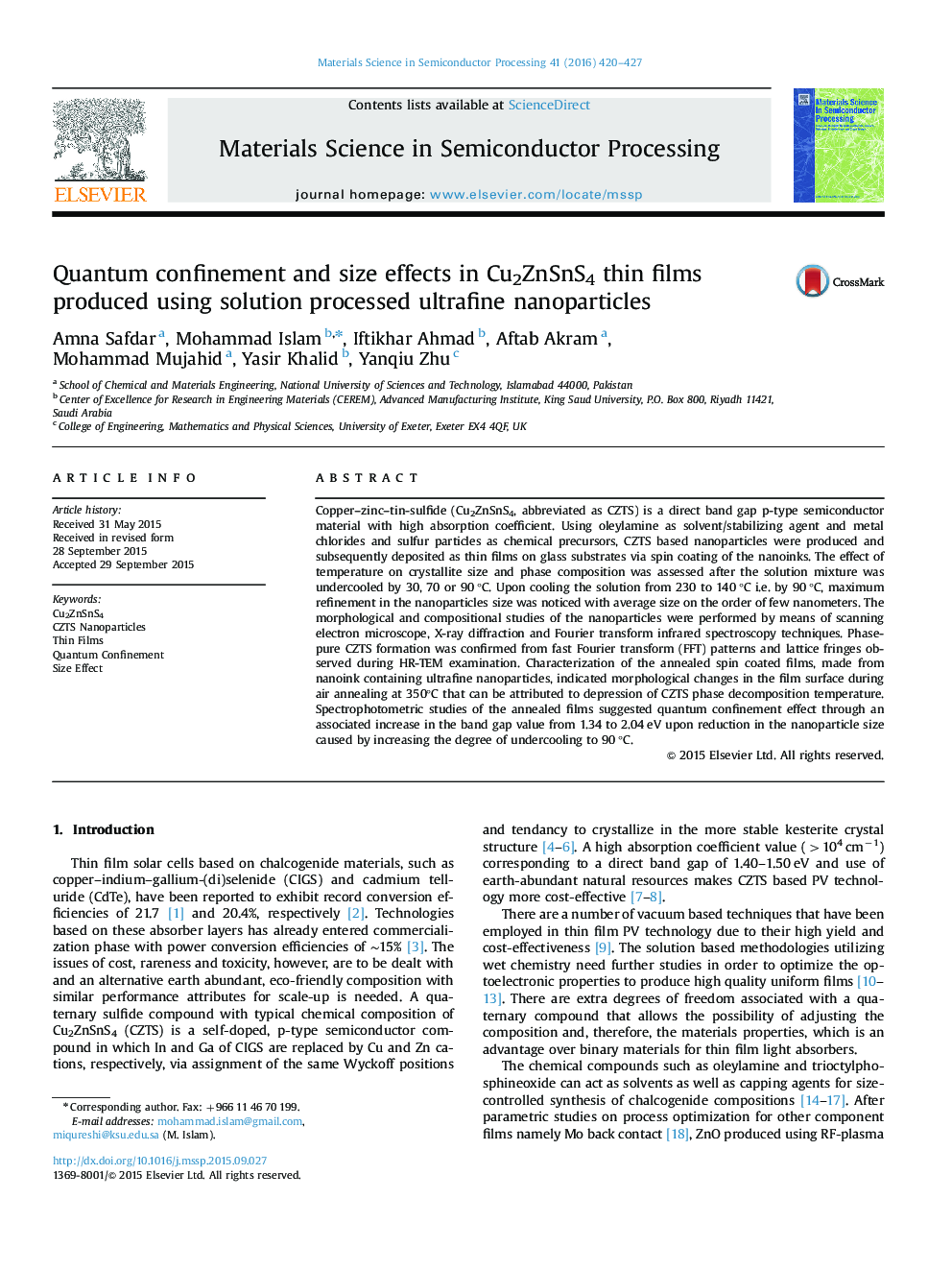| Article ID | Journal | Published Year | Pages | File Type |
|---|---|---|---|---|
| 728206 | Materials Science in Semiconductor Processing | 2016 | 8 Pages |
Copper–zinc–tin-sulfide (Cu2ZnSnS4, abbreviated as CZTS) is a direct band gap p-type semiconductor material with high absorption coefficient. Using oleylamine as solvent/stabilizing agent and metal chlorides and sulfur particles as chemical precursors, CZTS based nanoparticles were produced and subsequently deposited as thin films on glass substrates via spin coating of the nanoinks. The effect of temperature on crystallite size and phase composition was assessed after the solution mixture was undercooled by 30, 70 or 90 °C. Upon cooling the solution from 230 to 140 °C i.e. by 90 °C, maximum refinement in the nanoparticles size was noticed with average size on the order of few nanometers. The morphological and compositional studies of the nanoparticles were performed by means of scanning electron microscope, X-ray diffraction and Fourier transform infrared spectroscopy techniques. Phase-pure CZTS formation was confirmed from fast Fourier transform (FFT) patterns and lattice fringes observed during HR-TEM examination. Characterization of the annealed spin coated films, made from nanoink containing ultrafine nanoparticles, indicated morphological changes in the film surface during air annealing at 350°C that can be attributed to depression of CZTS phase decomposition temperature. Spectrophotometric studies of the annealed films suggested quantum confinement effect through an associated increase in the band gap value from 1.34 to 2.04 eV upon reduction in the nanoparticle size caused by increasing the degree of undercooling to 90 °C.
